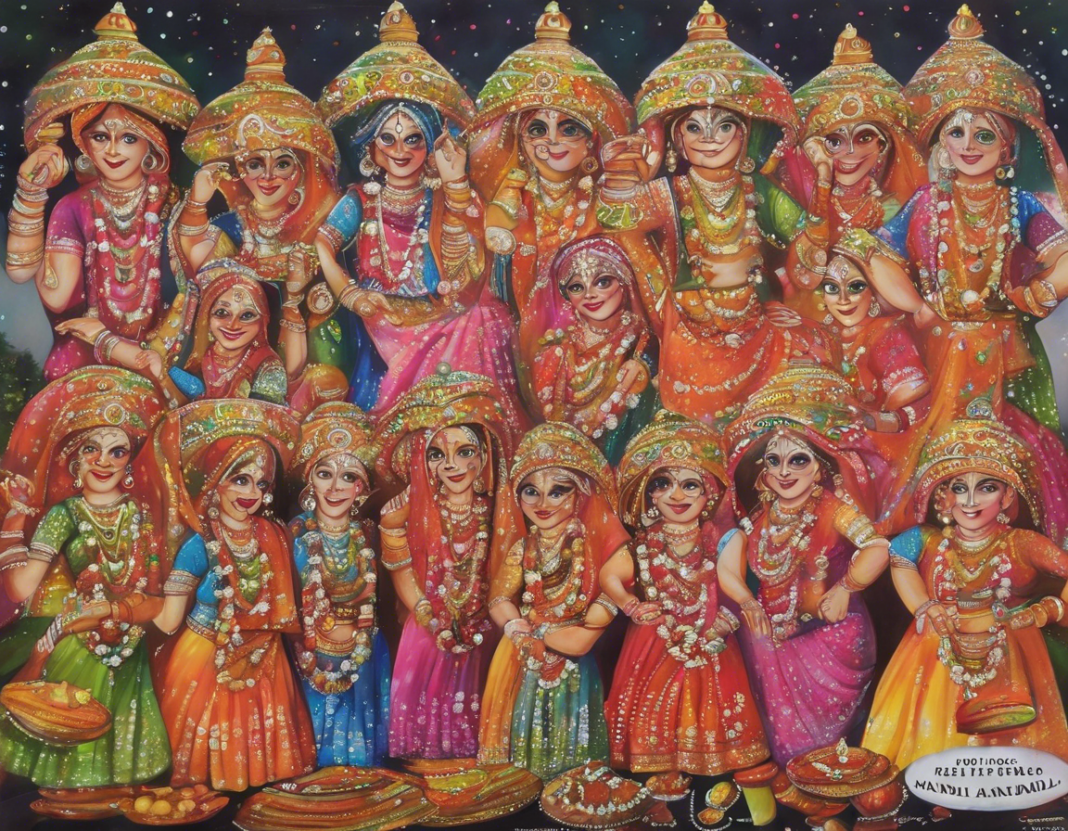The tradition of Prachin Mandli Garba is a vibrant and culturally significant dance form that has its roots deeply entrenched in the rich heritage of Gujarat, India. As one of the most popular and traditional dance forms of the Gujarati community, Prachin Mandli Garba holds a special place in the hearts of millions of individuals, not only in Gujarat but also across the world.
Understanding the Origins
Prachin Mandli Garba has a history that dates back several centuries. The word “Garba” itself is derived from the Sanskrit term “Garbha,” which means womb. This signifies a form of dance that celebrates the divine energy of the feminine, representing fertility and the circle of life. The origins of Garba can be traced back to ancient times, where it was performed as a form of worship to Goddess Shakti during the Navratri festival. Over the years, the dance form has evolved and diversified, embracing various styles and interpretations while still staying true to its cultural essence.
The Essence of Prachin Mandli Garba
At its core, Prachin Mandli Garba is a graceful and energetic dance form characterized by intricate footwork, rhythmic movements, and vibrant traditional attire. The dancers typically form a circular pattern, symbolizing the cyclical nature of life and the interconnectedness of all beings. The dance is accompanied by lively music, usually in the form of traditional folk songs sung in praise of the divine. The beating of drums, clapping of hands, and jingling of anklets create a dynamic and jubilant atmosphere, inviting participants to immerse themselves fully in the spirit of the dance.
The Cultural Significance
Prachin Mandli Garba holds immense cultural significance in Gujarat and plays a vital role in fostering a sense of community, spirituality, and tradition. The dance form brings people together, regardless of age, gender, or background, to participate in a collective celebration of joy and devotion. Through Garba, participants not only pay homage to the divine feminine but also express their cultural identity and heritage with pride. The intricate movements and patterns in Garba symbolize unity, harmony, and the rhythm of life, reflecting the values and beliefs cherished by the Gujarati community.
Evolution and Modernization
While Prachin Mandli Garba remains deeply rooted in tradition, it has also evolved over the years to adapt to contemporary sensibilities and tastes. Modern interpretations of Garba may incorporate elements of fusion music, innovative choreography, and creative themes, appealing to a younger and more diverse audience. Dance troupes and groups dedicated to preserving and promoting Garba continue to thrive, organizing workshops, competitions, and performances to keep the tradition alive and relevant in today’s world. Despite these adaptations, the essence and spirit of Prachin Mandli Garba remain intact, serving as a timeless link to Gujarat’s cultural heritage.
Embracing Prachin Mandli Garba
Participating in Prachin Mandli Garba is not just about dancing; it is about experiencing a sense of belonging, connection, and reverence for tradition. Whether you are a seasoned dancer or a curious observer, engaging in Garba can be a transformative and enriching experience. The rhythmic movements, infectious beats, and colorful attire all converge to create a magical ambiance that transcends boundaries and unites people in a shared celebration of culture and community.
Frequently Asked Questions (FAQs)
Q: What is the significance of the circular formation in Prachin Mandli Garba?
A: The circular pattern symbolizes the cyclical nature of life, the interconnectedness of individuals, and the continuity of tradition.
Q: Can anyone participate in Prachin Mandli Garba, regardless of age or experience?
A: Yes, Garba is inclusive and welcomes participants of all ages and skill levels to join in the celebration.
Q: Is there a specific dress code for Prachin Mandli Garba?
A: Traditional attire such as chaniya choli for women and kediyu for men is commonly worn during Garba performances.
Q: What are the main instruments used in Prachin Mandli Garba music?
A: Dhol, tabla, and manjira are some of the traditional instruments that accompany Garba performances.
Q: How can one learn Prachin Mandli Garba?
A: Many community centers, dance schools, and cultural organizations offer classes and workshops to teach the art of Garba to enthusiasts.
In conclusion, Prachin Mandli Garba is not just a dance form; it is a celebration of culture, tradition, and spirituality. By immersing oneself in the rhythmic beats and lively movements of Garba, one can truly experience the essence of Gujarat’s vibrant heritage and the timeless beauty of this cherished art form.




